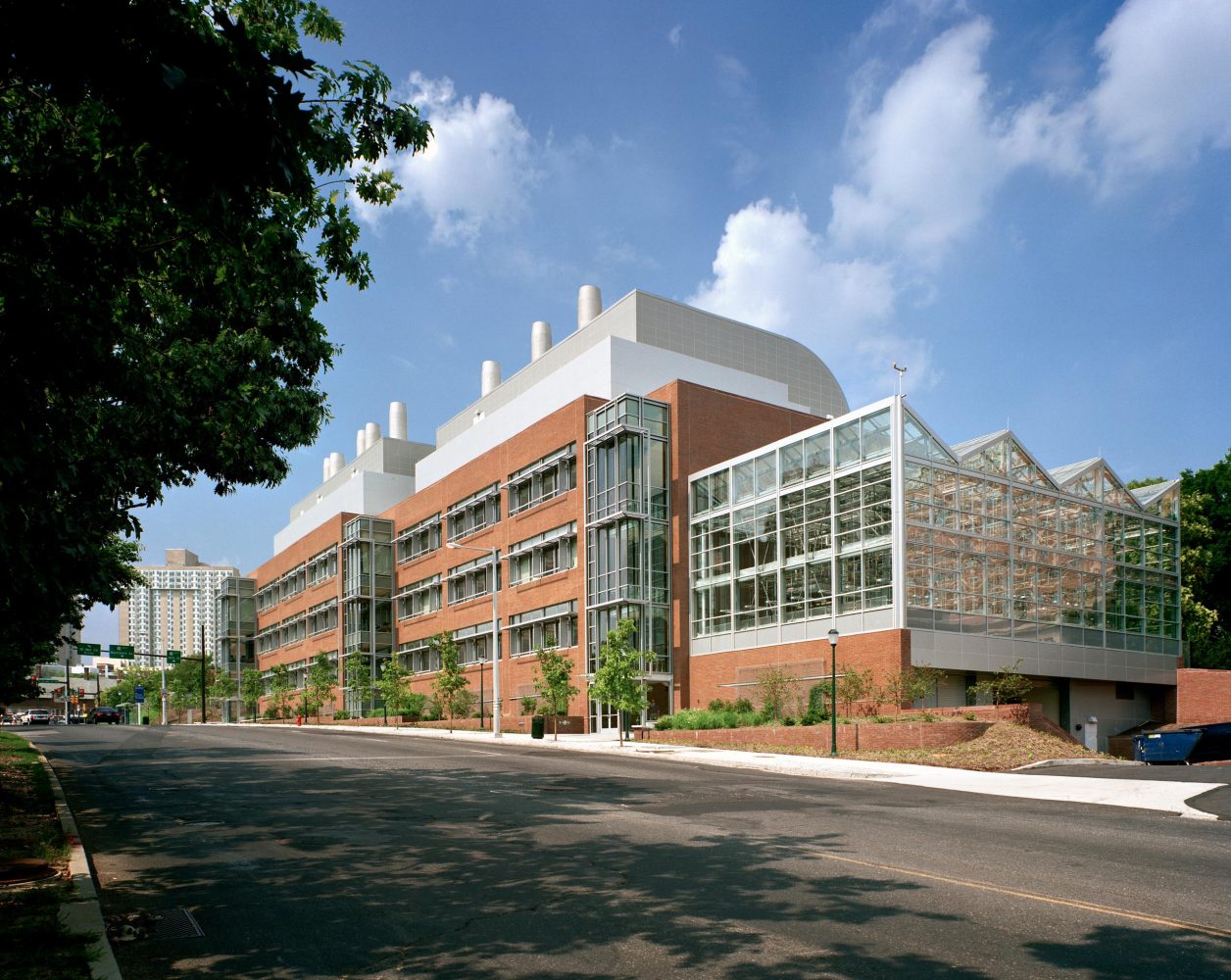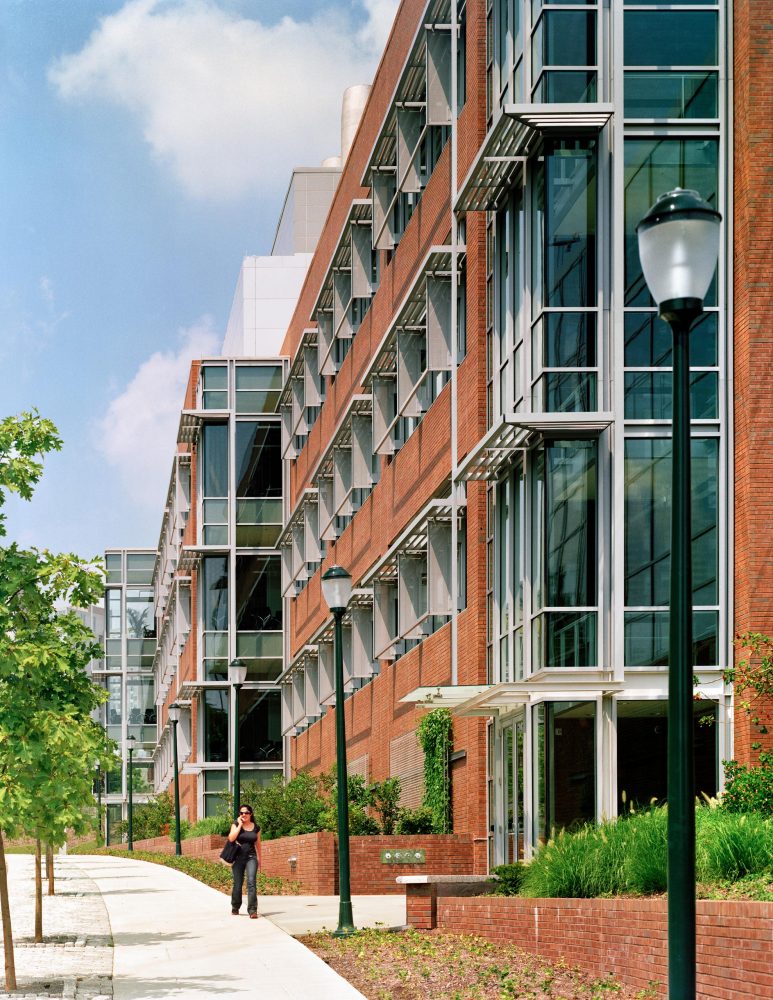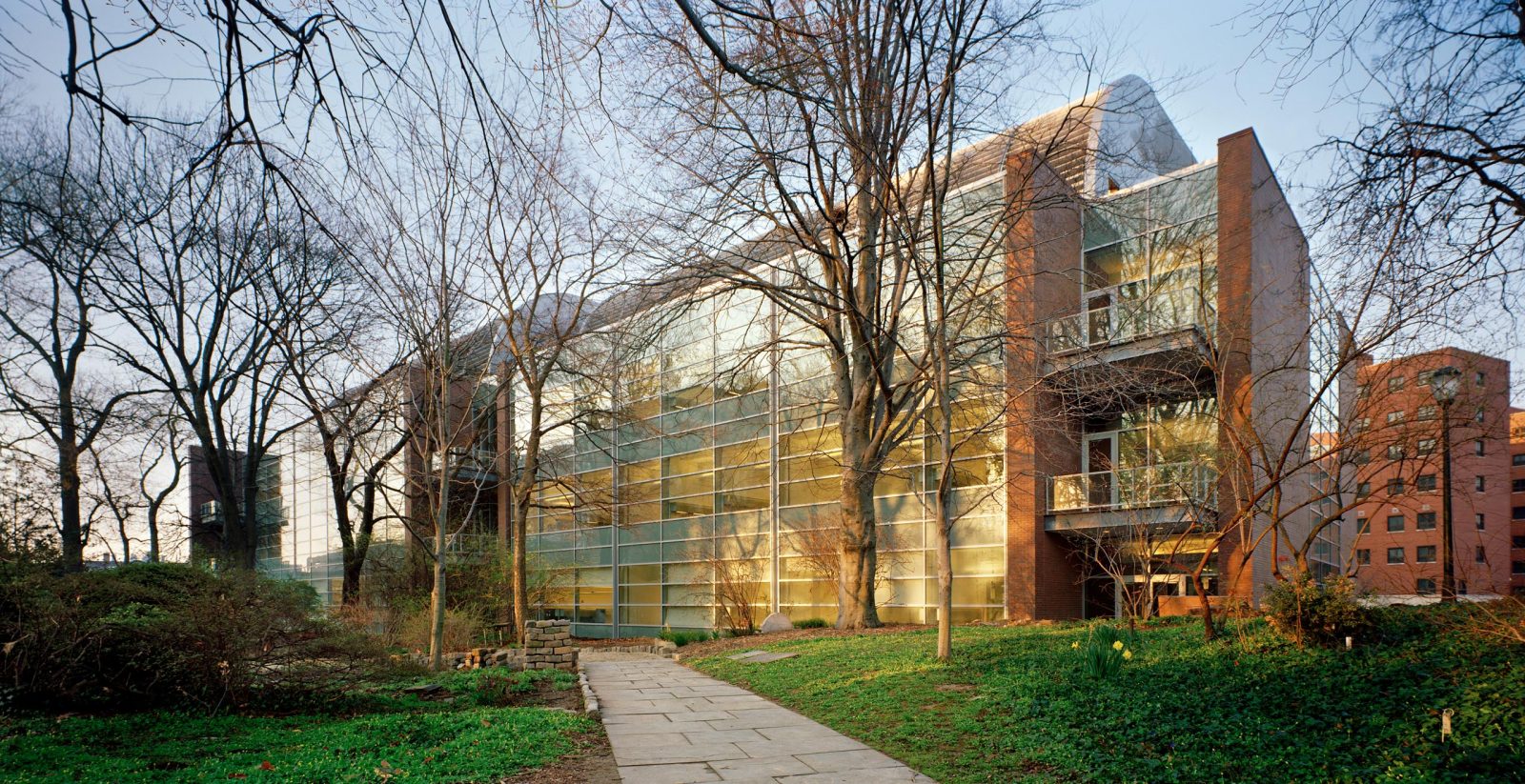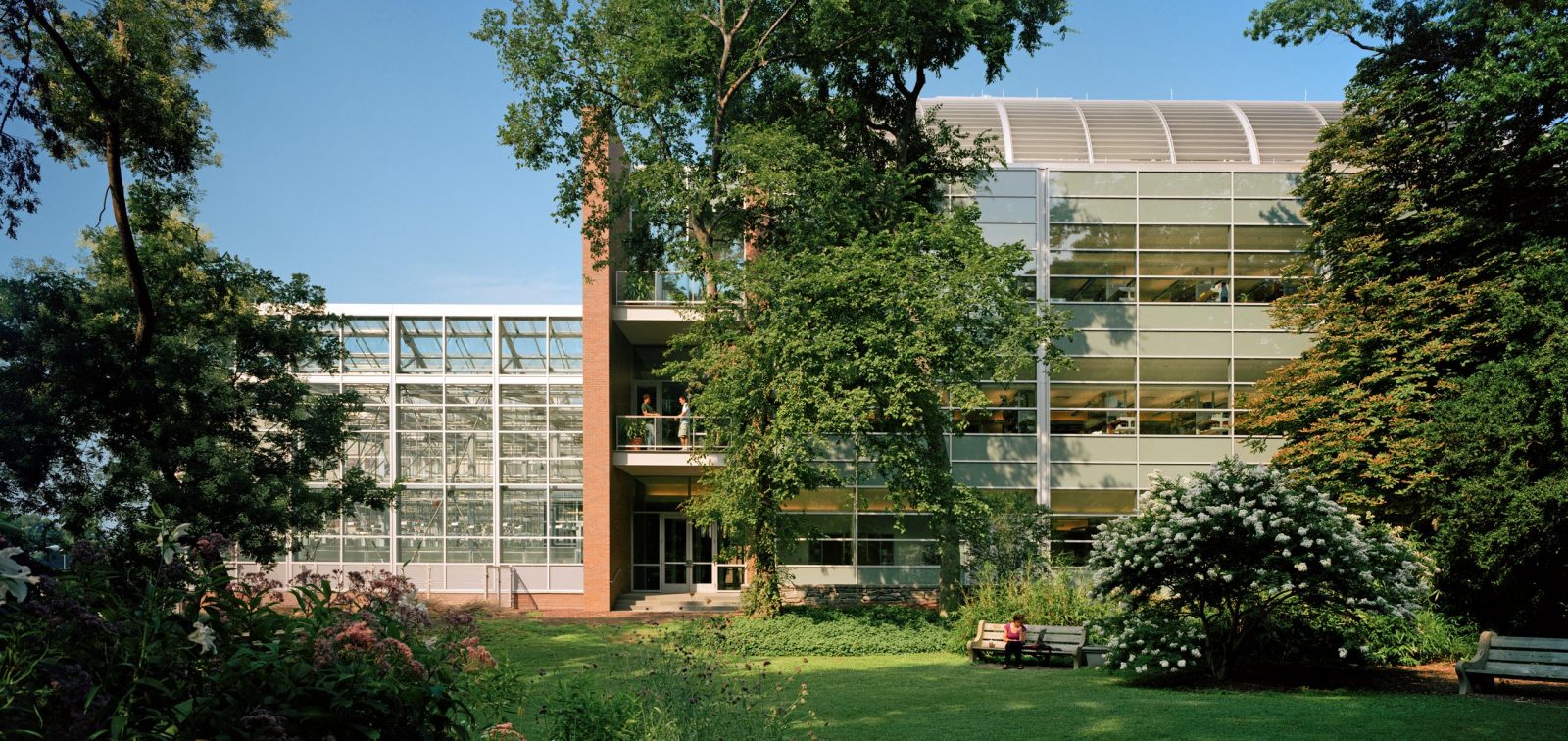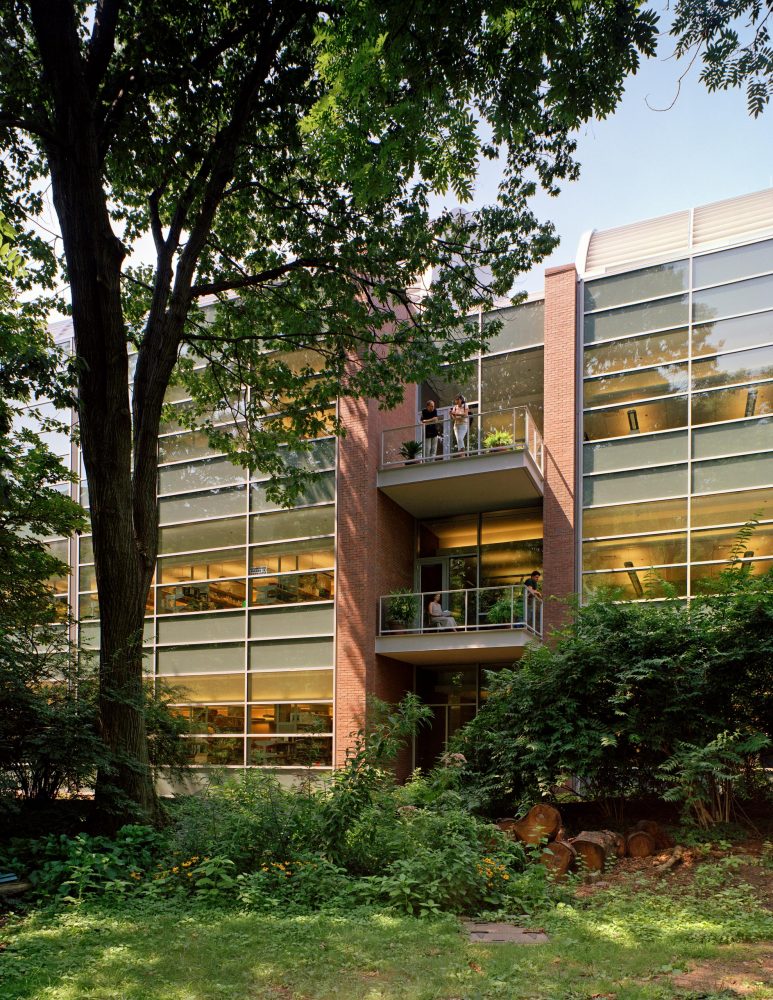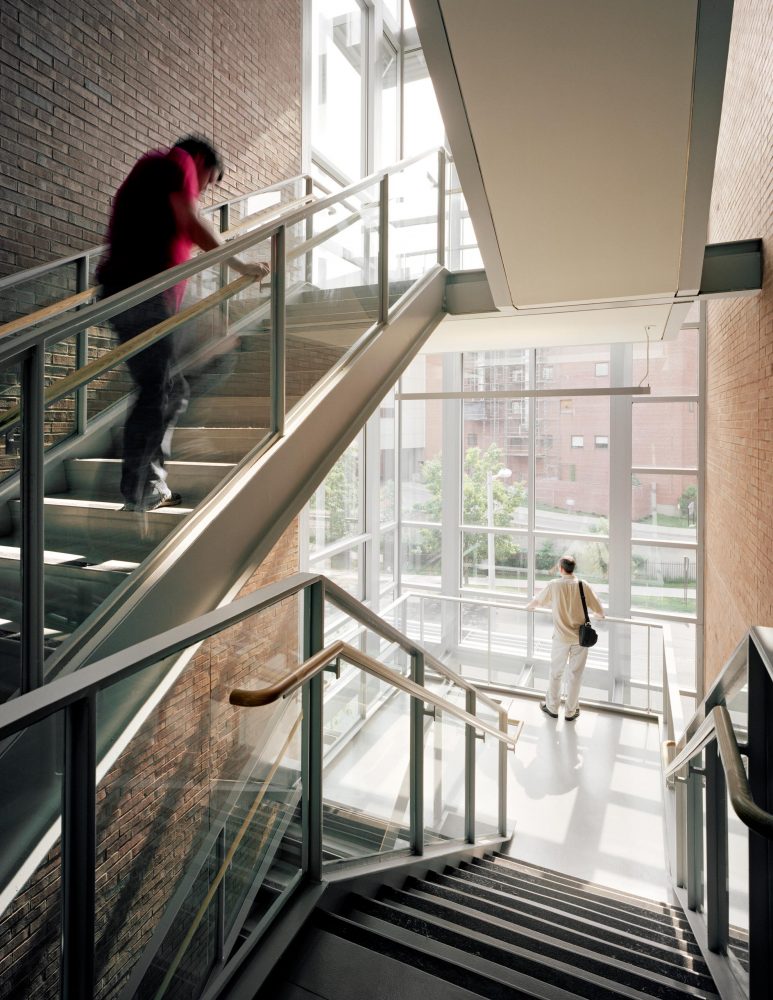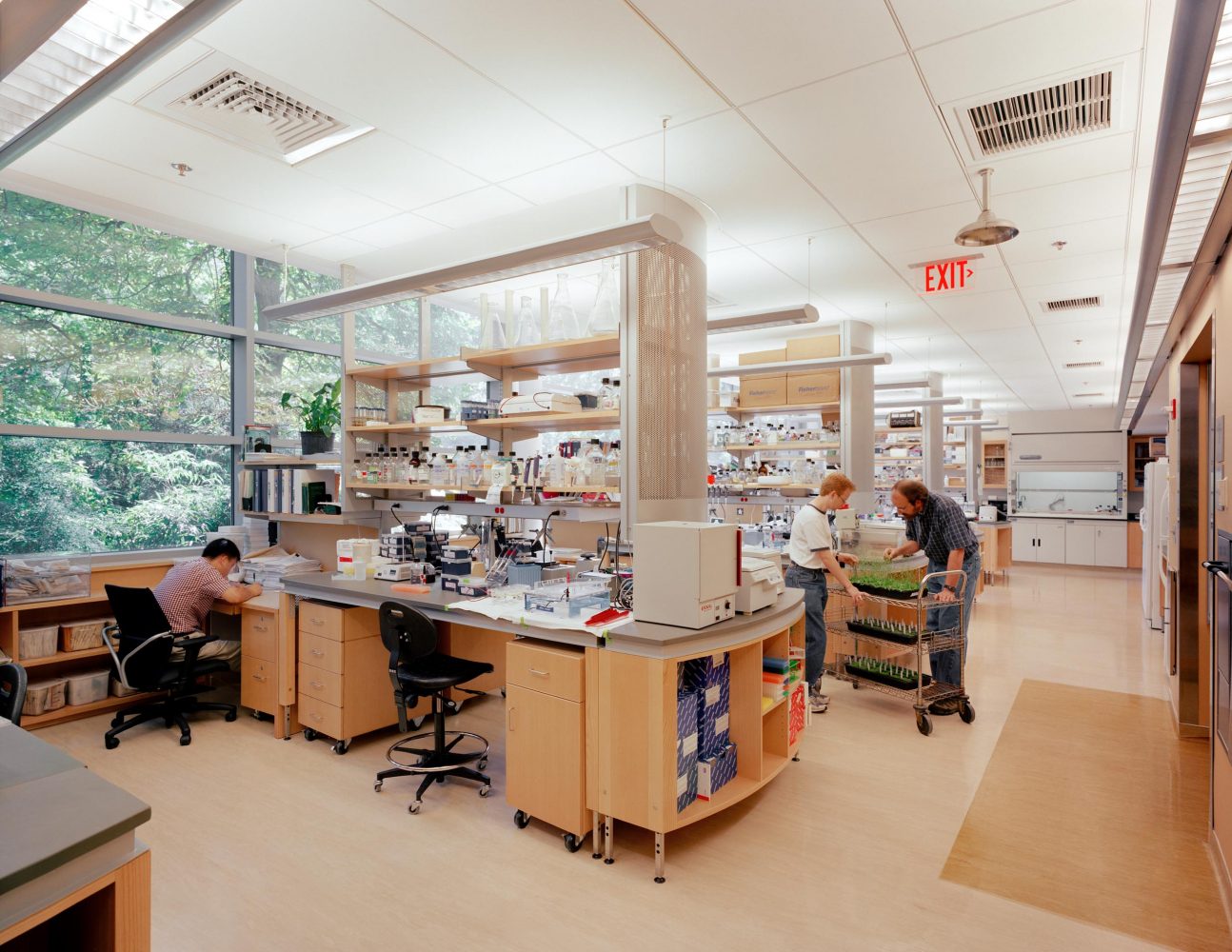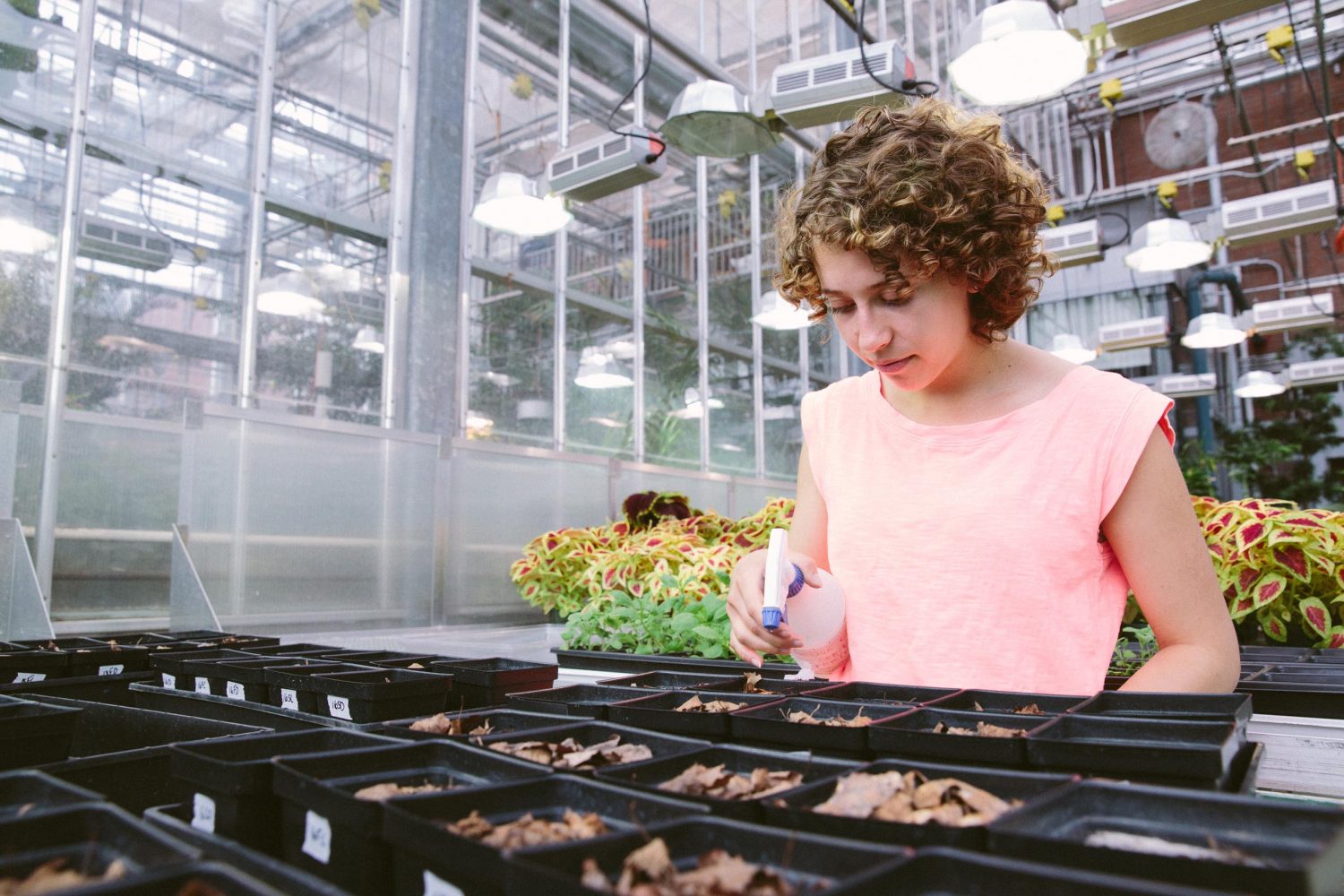University of Pennsylvania Life Sciences Building
University of Pennsylvania Life Sciences Building
Philadelphia, Pennsylvania | 110,000 gsf | $44 million | 2006
To assist the School of Arts and Sciences in developing contemporary research and teaching laboratories, classrooms, and related support space for the Departments of Biology, including Genomics, and Psychology, Ellenzweig prepared a master plan and programming study that considered over 220,000 gross square feet of facilities. We worked closely with individual users from the School of Arts and Sciences, a larger group of University user representatives, the Facilities department, and the administration in developing a detailed facility program.
The Carolyn Lynch Laboratory Building – an outgrowth of that plan – fulfills the objective of consolidating research space for the life sciences. The building provides 110,000 gross square feet of research laboratories, a vivarium, research greenhouse, plant growth facility, and faculty offices. The laboratory segments are joined by open, glass-enclosed common spaces that include conference rooms, lounges, and vertical circulation. Exterior finish materials respond to the very differing site edges. Along University Avenue, the building features a masonry and glass façade, with transparency marking the research community spaces where the building segments meet. The Garden façade features extensive glass to maximize views and create a reflective, rather than obtrusive, edge.
A number of notable existing buildings, including the Leidy Laboratory and Louis Kahn’s Richards Laboratory, were included in the scope of the original planning study; the Botanical Gardens were another existing landmark integral to the planning process. The design of the Life Sciences Building gives priority to providing natural daylight in laboratories and offices and to maximizing views to the adjacent Biology Pond and Botanical Gardens. Completing the edge of the Botanical Gardens, the building also defines the University edge along the public street with its welcoming entries.
Ellenzweig served as Architect of Record, Laboratory Planner, and Design Architect for the project; services included master planning and feasibility study, programming, architectural design, lab planning and design, and construction administration.


